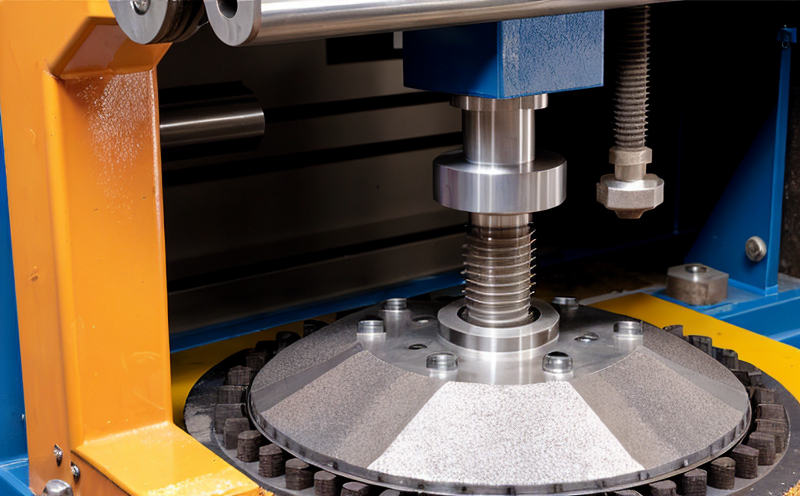ISO 20816-1 Mechanical Vibration Measurement
The ISO 20816-1 standard provides a comprehensive framework for measuring and evaluating the mechanical vibration characteristics of HVAC (Heating, Ventilation, and Air Conditioning) equipment. This service is crucial for ensuring that HVAC systems are optimized for reliability, performance, and compliance with international standards.
Measuring vibrations in HVAC systems helps identify potential issues such as misalignment, worn bearings, or other mechanical failures before they lead to costly downtime or safety hazards. By adhering to ISO 20816-1, manufacturers can ensure that their products meet the highest quality and reliability standards.
The standard covers various aspects of vibration measurement including the selection of appropriate sensors, placement techniques, data acquisition methods, and analysis procedures. It specifies the types of equipment that should be tested, such as fans, compressors, and pumps, which are critical components in HVAC systems.
One of the key elements of this service is the preparation of the test specimen, which involves ensuring the integrity and cleanliness of the component to be measured. The environment where testing takes place must also be controlled to avoid external vibrations that could skew results.
The instrumentation used for ISO 20816-1 compliance includes accelerometers, velocity transducers, and displacement sensors placed strategically around the equipment. These instruments are capable of capturing detailed vibration data over a wide frequency range, which is then analyzed using advanced signal processing techniques to determine compliance with specified limits.
The standard specifies clear acceptance criteria for mechanical vibrations based on predefined thresholds that indicate acceptable levels of vibration. Exceeding these limits may necessitate corrective actions such as lubrication, alignment adjustments, or replacement of faulty parts.
Compliance with ISO 20816-1 not only enhances the reliability and longevity of HVAC equipment but also contributes to safer operations by minimizing the risk of failures that could compromise air quality or lead to system breakdowns. This service is essential for maintaining high standards in industrial, commercial, and residential settings where reliable HVAC systems are critical.
Applied Standards
The ISO 20816-1 standard is widely recognized as the authoritative reference for mechanical vibration measurement in various industries. It aligns with other international standards such as ASTM E746, EN 13435, and IEC 61010 to provide a cohesive framework that ensures consistency across different regions.
Adherence to these standards ensures that the testing methods used are consistent with best practices worldwide. This alignment is particularly important for companies operating in multiple countries or seeking certification from international bodies.
The standard covers several key areas including sensor calibration, measurement techniques, and data interpretation methods. These components work together to provide accurate and reliable vibration measurements that can be used to diagnose potential issues within HVAC systems.
Industry Applications
| Industry Sector | Potential Issues | Solution Provided by ISO 20816-1 |
|---|---|---|
| Data Centers | Poor air flow leading to overheating | Vibration measurement helps identify misalignment issues in fans and compressors |
| Manufacturing Plants | Vibration-induced wear on bearings causing downtime | Continuous monitoring ensures early detection of potential failures |
| Hospitals and Clinics | Inconsistent air quality affecting patient health | Data provides insights into optimizing HVAC performance for better outcomes |
| Residential Buildings | Noise complaints from neighbors | Vibration analysis helps in isolating sources of noise and improving insulation |
Use Cases and Application Examples
In a data center, for instance, ISO 20816-1 compliant vibration testing can help identify misalignment in fans or compressors which might lead to poor air flow causing overheating. By ensuring that these components operate within specified vibration limits, the reliability of the HVAC system is enhanced significantly.
In a manufacturing plant setting, continuous monitoring through ISO 20816-1 allows for early detection of potential issues related to wear on bearings. This proactive approach helps in preventing costly downtime and extends the lifespan of critical equipment.
Hospitals and clinics benefit from optimized HVAC performance which ensures consistent air quality. By applying this standard, facilities can ensure that they meet stringent health and safety standards set by regulatory bodies.
For residential buildings, vibration analysis helps address noise complaints effectively. By isolating the sources of noise using detailed vibration data, improvements in insulation and soundproofing measures can be implemented leading to a quieter living environment for residents.





